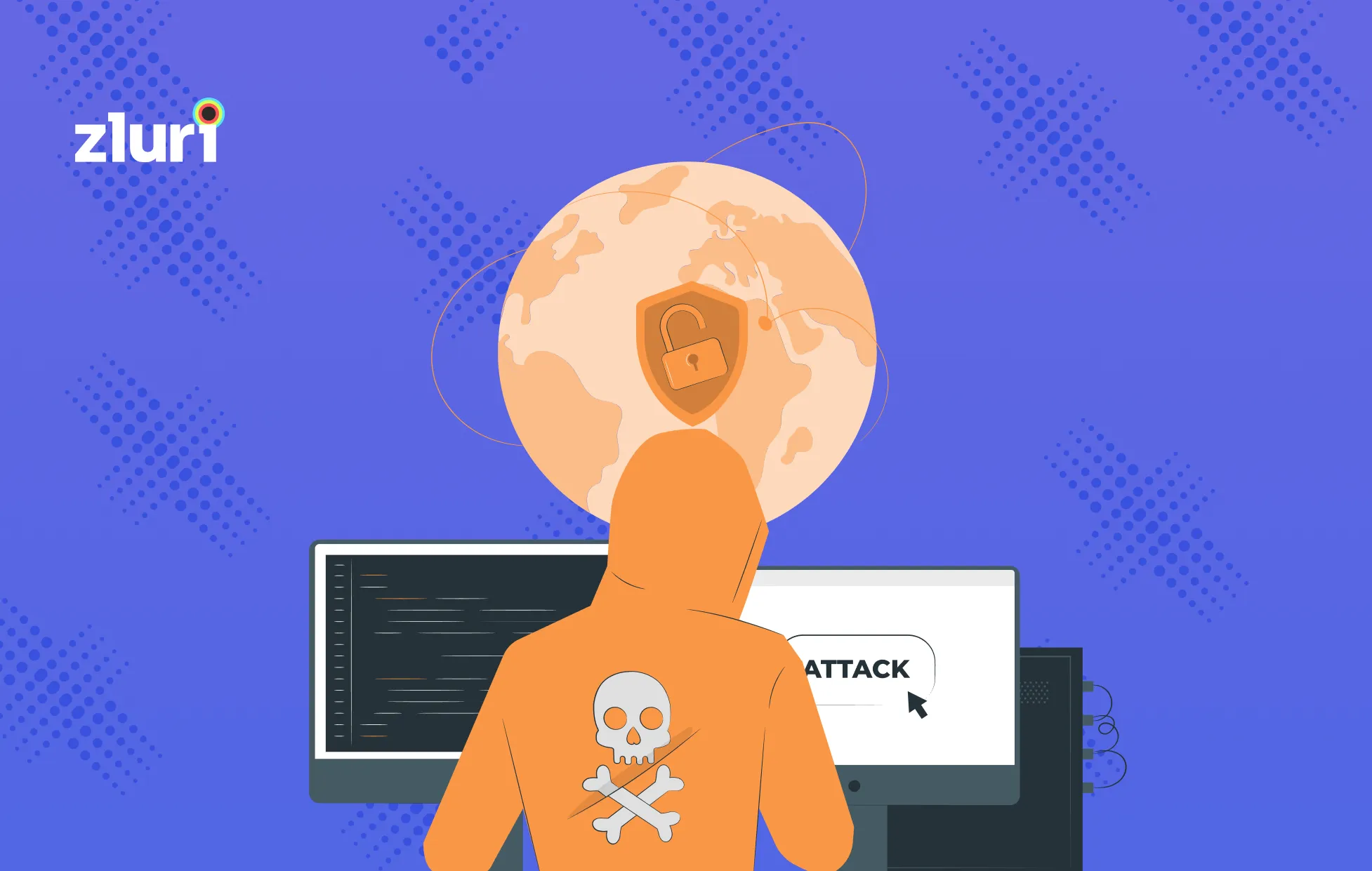The current and ongoing technological transformations are redefining the roles and responsibilities of CIOs and IT leaders and reshaping the future of IT.
Technology and business operations are becoming more and more intertwined. The job of CIOs and IT leaders is not limited to IT operations anymore. Now, they are the strategic minds behind the seamless business operations during the transition from a traditional working culture to a hybrid working model.
Here's a look at some of the major trends that are involved and how they will affect IT leaders and CIOs in 2026 and beyond:
1. Upkeep With the Hybrid Environment

As a part of the transition to a hybrid business model, decision-makers are re-evaluating the optimum ways to use office space. The future of the corporate office is now considered to be more like a meeting point for activities, where team meetings and gatherings would take place, as opposed to it being a massive workplace.
This transformation will demand offices to restructure themselves, incorporate more meeting rooms, and reduce the number of workstations.
CIOs and IT leaders have to innovate themselves to upkeep with the challenges of the hybrid working model. This will require them to redefine security measures they already have in place, as well as work on ways to improve remote assistance.
Also, there is an increase in shadow IT when an employee works remotely. Shadow IT has serious consequences on cyber security measures the company has in place. Now the biggest challenge CIOs face is to make sure employees have every tool and security in place to perform their jobs seamlessly and securely, no matter where they are located.
Secure practices also involve training the remote workforce on the proper use of their devices and networks, so they can avoid shadow IT, phishing attacks, and malicious sites.
2. Secure Way to Access Important Files
CIOs have control over how employees use the network when they work from the office. They can set protocols to keep their network and data secure and use permissions that can restrict employees from accessing certain web pages and applications that pose a risk.
But this is not the case when an employee is working remotely, as sometimes they may also be using public WiFi to access the company’s sensitive data.
To reduce security risks associated with remote working, there is a need for special configurations. IT heads need to have in place, like:
The principle of least privilege (PoLP)refers to the idea that only the privileges necessary for a user's work are granted. It allows restricted access to only those resources that are essential for the user- on the basis of their location, department, or time of the day.
Shift from the Castle and Moat model to The Zero Trust Model. Zero Trust Model does not allow access of data to any device until and unless they are authenticated every time, even in spite of their previous authentication. This is to ascertain that the access is not granted to attackers. Zero Trust Model also gives the option of restricted access to the environment and its resources to users who are already inside, which is helpful in reducing the damage caused by a breach.
3. Need for Proper Endpoint Security in Place for Encryption of Sensitive Data
Increased adoption of a hybrid working culture has increased the challenges for IT leaders and CIOs. IT now requires the safety of devices people use to work from remote locations.
The attack point in a traditional castle and moat model is the server, but with increased adoption in remote working, the attack point is now the endpoint devices. Employees use personal devices to access cloud data (BYOD- employees using their own devices to access potentially sensitive or confidential work-related data). Therefore, the remote workforce is increasingly becoming a target vulnerable to data breaches and cyberattacks.
Having no clear visibility into SaaS apps and remote devices, IT teams have no control over how the workforce access data. This requires safety protocols in place to minimize data breach risks.
It is ideal to use remote-wipe apps on devices to erase data if the devices are lost or stolen.
2024 demands the implementation of encryption softwares on user devices to protect data in remote settings to ensure maximum security. This will prevent attackers from gaining access to the company’s data through endpoint devices.
4. System That Secures Cloud from Cyber Attacks

Organizations using clouds have limited control and visibility on their access to data on the cloud. They usually rely on their SaaS vendors to have all the security measures in place, but that is not always the case.
Even a slight misconfiguration in the cloud can expose it to cyber attacks. The biggest threat with the cloud is that it is easily accessible using public WiFi, making it vulnerable to access and attacks without you even being aware of it.
Apart from being vulnerable to outside threats, the cloud is also vulnerable to malicious insiders.
Once a threat actor or a hacker gains access to employees' credentials, they can gain access to information related to the company's business partners and customers in no time and can also exploit them easily. Thus, making it a challenge for IT security teams and CIOs to have better security measures in place to safeguard the cloud from cyber attacks.
5. Automation of Everything, including Cybersecurity
There has been a significant rise in AI platforms and automation tools in recent times.
Organizations use hyper-automation to analyze and automate a wide range of repetitive processes. Hyper Automation uses cutting-edge technologies like IPA (Intelligent Process Automation), which eliminates the requirement for human intervention.
Hyper automation will prove to be helpful in keeping up with the everyday evolving threat landscape. It will make it easier for IT professionals to handle cybersecurity risks in time by allowing them to identify issues before it gets too late.
Furthermore, unburdening risks are associated with remote working. Hyper automation will provide enhanced visibility on threats, thereby preventing networks from being compromised.
CIOs have to approach hyper-automation in ways that avoid risks associated with cybersecurity, as even threat actors are becoming increasingly sophisticated with the use of AI in their attacks.
Hyper automation use technologies like predictive analytics and machine learning. These technologies can help tackle risks accompanying end-users in remote settings, which will prove to be of great help to IT leaders in efficiently handling security risks.
Many IT operations will benefit from hyper-automation because it will alleviate the burdensome obligations associated with their operations. While hyper-automation may be beneficial in IT operations, it is a real challenge for technology to meet security requirements.
6. The Rise in No Code-Low Code (NC/LC) Platforms
Low-code solutions make use of visual development environments, which is suitable for developers with some coding experience and also for developers looking for a quick fix.
No-code platforms have a visual drag-and-drop interface, which eliminates the need for any coding.
The use of NC/LC has increased significantly in the field of Artificial Intelligence and RPA (Robotic Process Automation) to encourage collaboration between business and IT teams. This collaboration is essential to reduce project failure risks and ensures the delivery of critical business applications on time.
In addition to being easily scalable, cloud-based LC/NC solutions are also compatible with multiple clouds and are secure.
LC/NC ensures rapid advancements in minimum time without having the need to add more IT staff. Thus reducing the amount of time IT leaders and CIOs spend on things like upgrades, performance checks, security, and compliance issues — giving them more control over compliance and governance so that they can get their jobs done more efficiently.
7. Adoption of Edge Computing To Bypass the Latency Caused by Cloud Computing
Cloud computing and edge computing are two different areas of computing that have their own individual significance. Cloud computing is used for almost everything today, but its main drawback is that it cannot process time-sensitive data, and that’s where edge computing is proving to be revolutionary.
In order to improve user experience, experts are looking into ways to bring cloud processing and storage (edge cloud) closer to where the end-user is, rather than relying on data centers located remotely. Edge clouds are being offered as a service in remote locations with limited or no connectivity to a centralized location.
With Edge Computing, data will be processed and analyzed on local servers, making data easily accessible to endpoint devices, or users, with the purpose of reducing bandwidth utilization.
Organizations also require quick outcomes from IoT implementations, where even a slight delay in response could be considered excessive.
Edge computing is being welcomed with open arms, as it promises to open up a completely new market which is expected to be much greater than that of the cloud.
Since edge computing is still in the early stages of development, IT leaders and CIOs need to gear up for the security and compliance challenges they may have to face as edge computing gains traction.
8. Incorporation of Augmented Reality in Business Process

Augmented reality incorporates real-world aspects, which involves overlaying computer graphics on top of the real world — using either a phone or AR glasses.
AR is set to transform a wide range of industries like gaming, healthcare, retail, and education, to name a few.
With hybrid being the new norm in many industries, the world will see a huge shift in how remote meetings and events will be conducted in the coming years using AR, transitioning from 2D to giving users an experience similar to real-world meetings.
By making use of AR, IT professionals will be able to rectify the problems of users from remote locations using AR-powered 3D screens.
Since AR is still in the early stages of development and lacks regulations on how it will process data, CIOs have to strategize around how that can be taken care of.
The increased adoption of augmented reality in the future demands from IT leaders and CIOs privacy and security measures in place to safeguard user data and to streamline the adoption of AR across industries.
Keeping Abreast With the Technical Advancements
Technological breakthroughs have been made possible due to accelerating change, funding for technical research, and growing demand for technology.
Collectively, all these trends allow us to perceive how organizations will function in years to come — in an entirely different light.
Now CIOs and IT leaders have a lot more on their table, from managing traditional IT tasks to simultaneously coming up with solutions that can handle the transformative change associated with the hybrid working model.









.svg)














